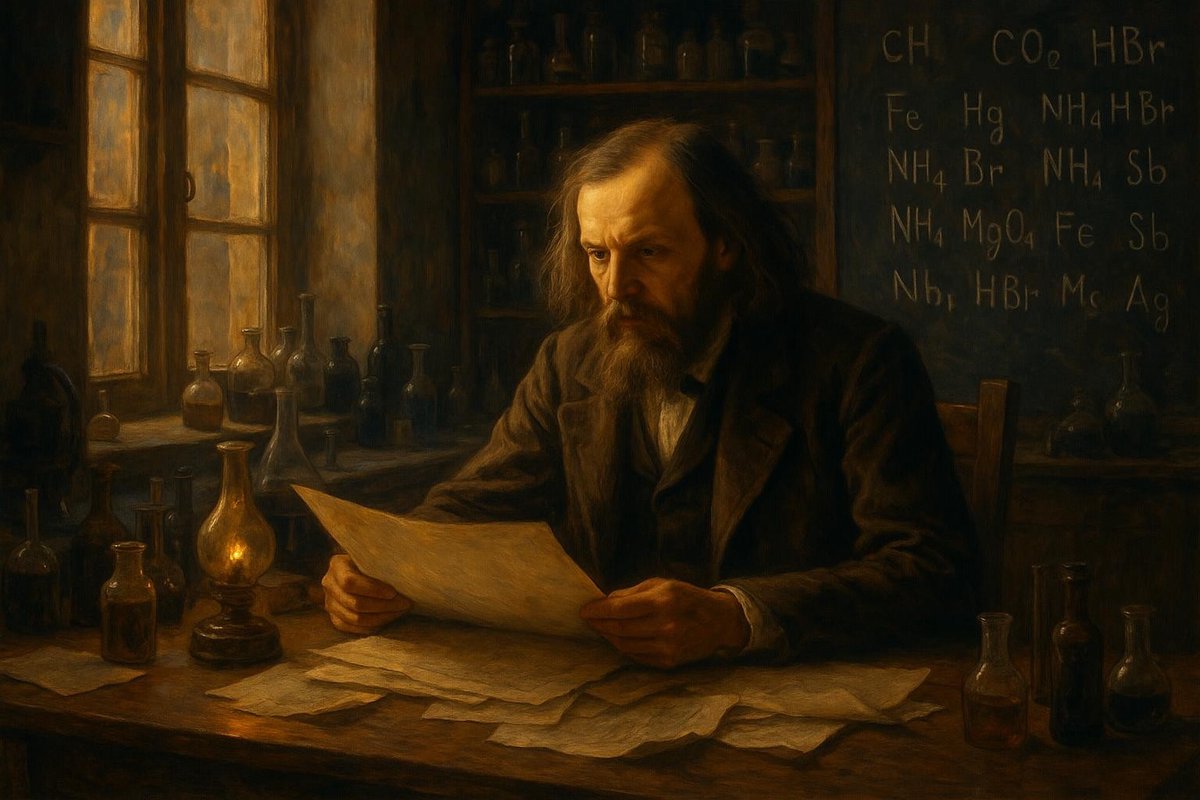
One evening in 1869, a Russian chemist sat hunched over his workbench, surrounded by piles of notes, elements, and the fervent energy of discovery. Dmitri Mendeleev, driven by a vision that seemed almost otherworldly, was on the brink of assembling what would become a cornerstone of modern science. How did this iconic table come to be, and what forces sculpted its origin?
The Origins: A World Before Order
Before the creation of the periodic table, the world of chemistry was a chaotic landscape of elements and compounds with no clear organization.
- Imagine a world where each chemist spoke a different dialect of the same language, struggling to understand a greater truth.
- The late 18th and early 19th centuries were a time of rapid discovery, where elements were identified but lacked a unifying theory.
Society was in the throes of the Industrial Revolution, sparking a demand for scientific advancement and education. As time progressed, the need for a systematic approach grew undeniable. Chemists around the world worked tirelessly, yet the pieces of the puzzle did not fit — until Mendeleev.
Key Figures: The Architects of Order
While Mendeleev is often hailed as the father of the periodic table, many souls toiled in the shadow of this discovery.
- John Newlands proposed the Law of Octaves, observing patterns in elements, although it was initially dismissed.
- Julius Lothar Meyer worked concurrently on a similar table, emphasizing atomic volume.
These pioneers, among others, laid the groundwork that Mendeleev built upon. Through determination and persistence, their combined efforts sculpted an era of enlightenment within the scientific community, turning the chaos of elements into harmonious order.
The Turning Point: Mendeleev’s Vision
Mendeleev’s breakthrough came not in a moment of quiet reflection, but rather as a flash of insight during a fevered dream.
- In his dream, he envisioned the elements falling into place, arranged by atomic weight and properties.
- This vision led him to predict undiscovered elements, filling the gaps with almost prophetic accuracy.
Interestingly, his relentless dedication and intuition went against the grain of accepted scientific methodologies of the time. His work was not just about arranging elements but unlocking the mysteries of the universe. His table was a map, guiding future scientists through uncharted territories.
Impact on the World: Beyond Science
The periodic table did more than just organize elements; it transformed the way we perceive the world around us.
- It became a powerful educational tool, sparking curiosity in classrooms worldwide.
- Culturally, it symbolized the human quest for knowledge and order amidst chaos.
Beyond its scientific applications, the table inspired artists and writers, becoming an icon of logic and creativity. It encouraged a generation to dream bigger, to see patterns in all aspects of life, and to understand that the universe itself is governed by a beautiful order.
The story of the periodic table is one of inspiration and innovation. It reminds us that true discovery often requires us to challenge norms and embrace visionary ideas.
As we continue to explore the unknown, the periodic table stands as a symbol of what humanity can achieve when driven by curiosity and a desire for understanding.
Fuel Someone Else’s Curiosity
If this journey into the periodic table’s assembly has ignited a spark of wonder in you, imagine what it can do for others. Share this story, discuss it with friends, and let it inspire new dialogues and discoveries. Let’s celebrate the curiosity that drives us all.

Leave a Reply